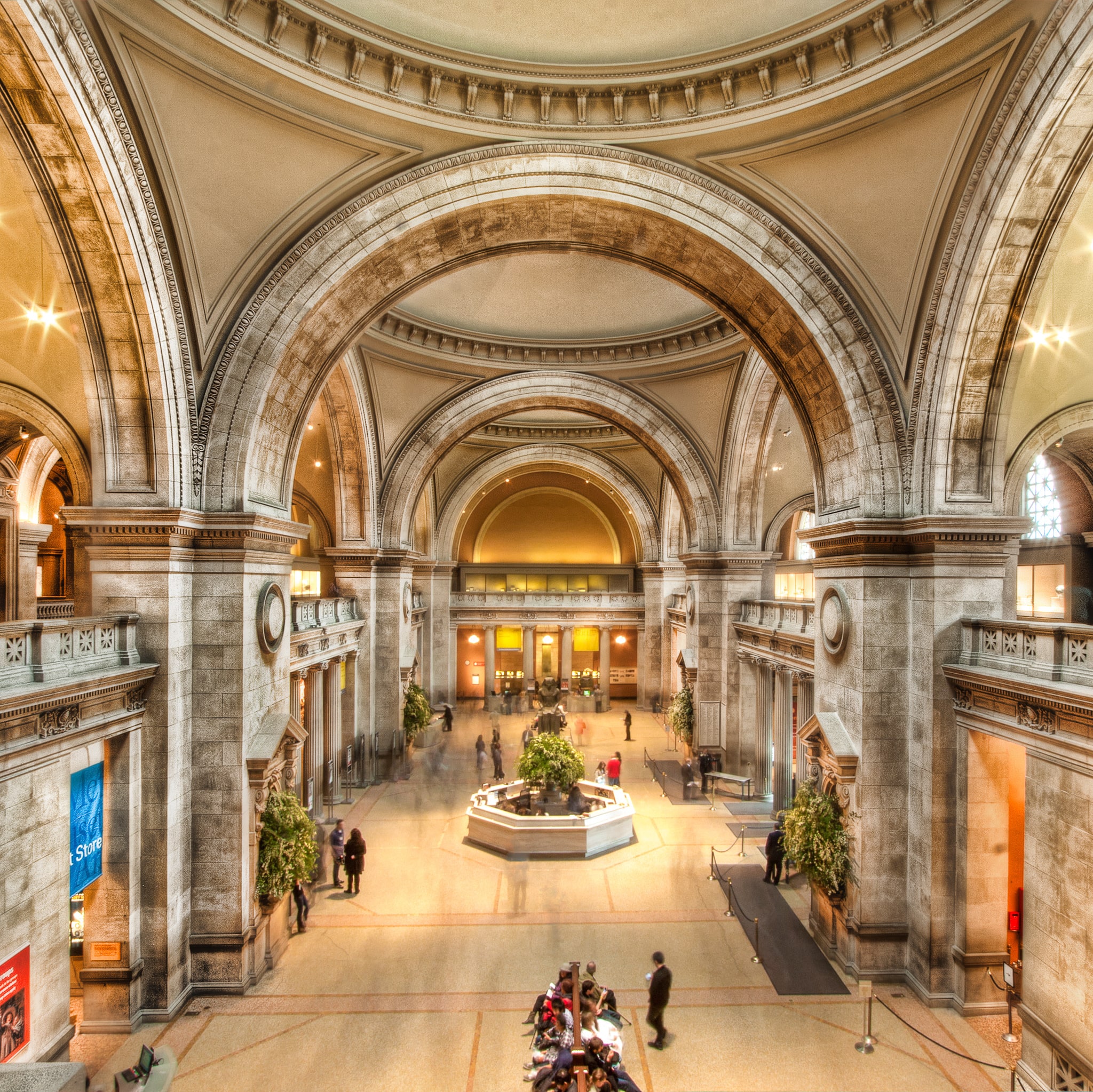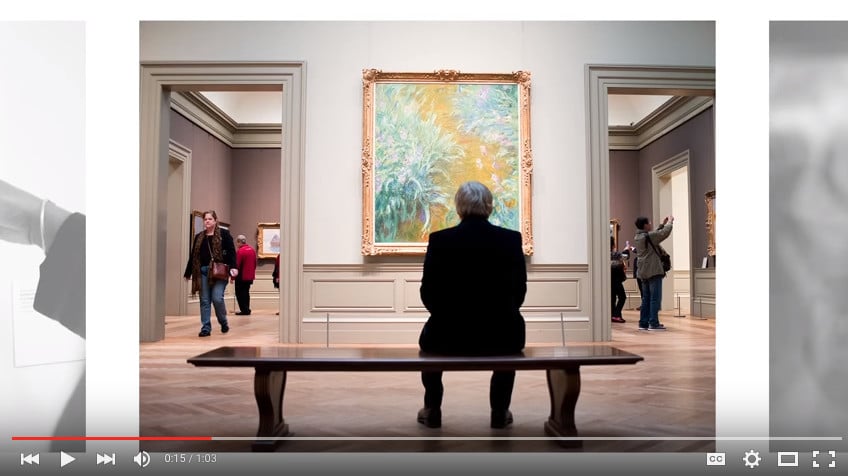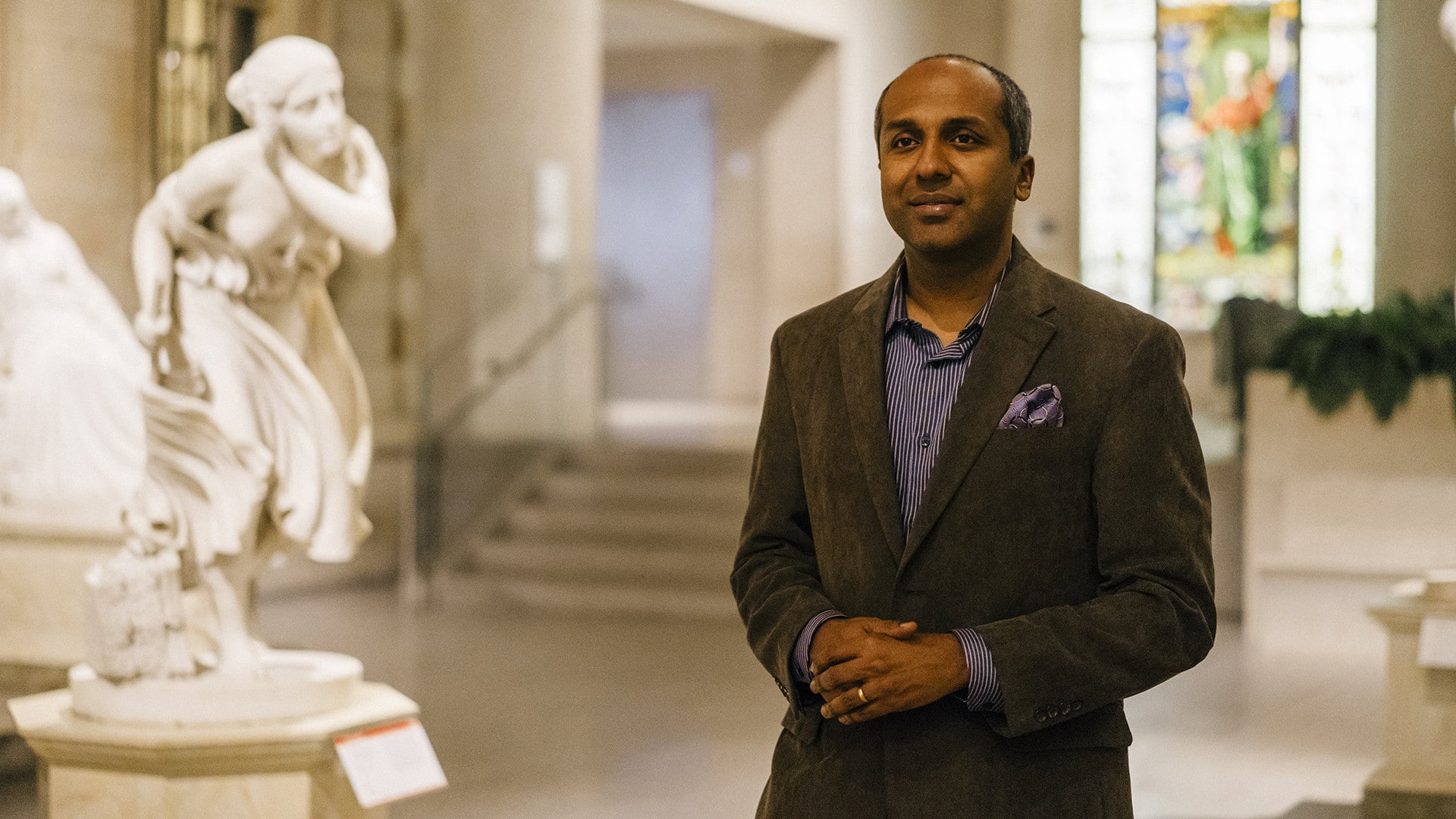Sreenath Sreenivasan es el primer Director Digital del Museo Metropolitano de Arte, una responsabilidad que él resume de forma sencilla: "Dirijo una startup de 70 personas dentro de una empresa de 145 años". Como el mundo ha cambiado, también deben hacerlo los museos, y la visión de Sree para el Met ha garantizado que seguirá siendo relevante durante mucho tiempo, gracias en parte al reconocimiento del ámbito digital, así como a su lugar junto a la historia y el arte que lo precedieron.
Este año ha sido nombrado una de las personas más creativas de Fast Magazine. En la Pensadores del diseño 2015, nos habló de su historia en el Met, de cómo un museo debe adaptarse a los nuevos tiempos y de por qué las experiencias virtuales nunca sustituirán a las reales.
La transición de la enseñanza en la Universidad de Columbia a su nuevo puesto en el Met: "Había crecido cerca del Met y nunca pensé que dejaría Columbia, pero era una oportunidad para contar la historia de estos millones de objetos; eso se convirtió en una obsesión. Todo el mundo dice que le encanta el Met, pero yo pude enseñarles fotos de mi Twitter a lo largo de los años de todas las cosas que me gustaban del Met, así que ni siquiera tuve que preparar nada nuevo.
Mi familia viajaba mucho porque mi padre era diplomático indio, pero durante un periodo formativo [de mi vida], fui al colegio a una manzana del Met y vivía a cuatro manzanas de él. Si amas a alguien durante 30 años, y todo el tiempo es un amor unidireccional, y ella te llama, pues tienes que coger la llamada, y luego, con el permiso de tu mujer, seguir adelante. Que es lo que hice, y lo que hicimos, y así es como acabé aquí".

Por qué necesitamos museos en 2015:##
"Creo que el papel del museo es conseguir que la gente se interese por el arte del mundo, la historia del mundo y el patrimonio del mundo. Especialmente ahora, cuando vemos que gran parte de nuestro patrimonio está en peligro, en Oriente Medio o en otros países donde se destruyen cosas. Creo que los museos tienen la función de hacer que la gente se preocupe por esa historia. El otro papel [de los museos] es enseñar a los jóvenes el arte y conectar con él.
Anteayer vi un cuadro de Modigliani vendido en una subasta por el segundo precio más alto de la historia. Es bastante asombroso que tengamos el mismo modelo, el mismo artista, básicamente el mismo cuadro, y que puedas verlo cuando quieras. El que se ha comprado desaparecerá ahora del dominio público, pero el nuestro puedes verlo desde cualquier sitio, en cualquier momento".
Hay algo en las conexiones físicas que es realmente valioso, y no queremos perderlo.
Sobre las ventajas e inconvenientes del funcionamiento del Met:##
"En el Met tenemos una situación poco habitual. Puedes pagar un dólar y entrar y verlo todo;, no hay exposiciones de pago, ni gratuitas. Lo que hemos aprendido es que una de las ventajas de no cobrar por las exposiciones especiales, así como una desventaja, es que no hacemos esas exposiciones taquilleras que todo el mundo quiere venir a ver. Cuando tus ingresos proceden de exposiciones especiales, intentas hacerlas cada vez más grandes.
Podemos hacer lo que queremos, en lugar de lo que tenemos que hacer para que la gente entre por la puerta. Eso no significa que no hagamos espectáculos populares; por ejemplo, hacemos este instituto de la moda y gala anual con Anna Wintour, y el año que viene es sobre Apple y la moda y va a ser impresionante. Es realmente increíble. Y es un ejemplo de cómo las empresas digitales quieren implicarse en el mundo del arte, y eso es importante. El año pasado el evento lo patrocinó Yahoo!, este año lo patrocina Apple. Estamos hablando con [Jonathan] Ive, que trabajó en el iPhone".

El valor de los palos selfie, y las galerías/museos que se resisten a ellos:##
"Lo primero que aprendimos [en el Met] hace 20 años, cuando construimos nuestro sitio web, fue que si pones arte en él, la gente seguirá viniendo a nuestro espacio físico. En comparación, hay algo en el Gran Cañón llamado Skywalk, que es una "U" gigante de cristal suspendida a 30 metros por encima del cañón. Y tengo amigos, y mis hijos, y otros que estaban obsesionados con esta cosa: han visto todos los vídeos, de todas las GoPro o de todos los YouTuber. Lo han leído todo. Eso no significa que no quieran ir: quieren ir aún más. Y yo tendré que llevarlos, ¡pero estaré encogido a 30 metros en la otra dirección!
La gente quiere experiencias. Mira esta conferencia. ¿Por qué hay 1600 personas en una conferencia sobre diseño? Puedes simplemente leer sobre diseño. Puedes encontrar todos los vídeos de YouTube de casi todos estos ponentes. Hay algo en las conexiones físicas que es realmente valioso, y no queremos perderlo".












